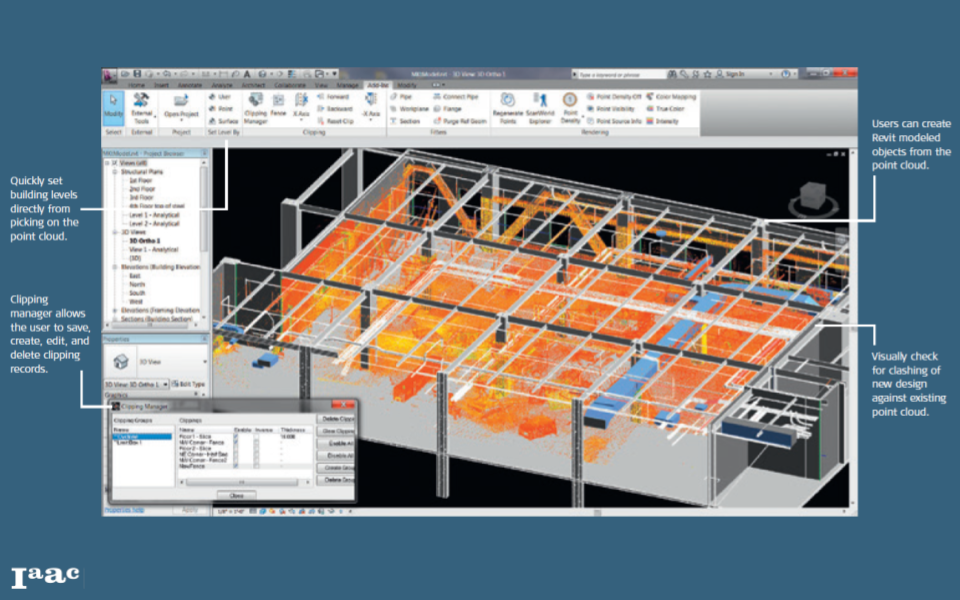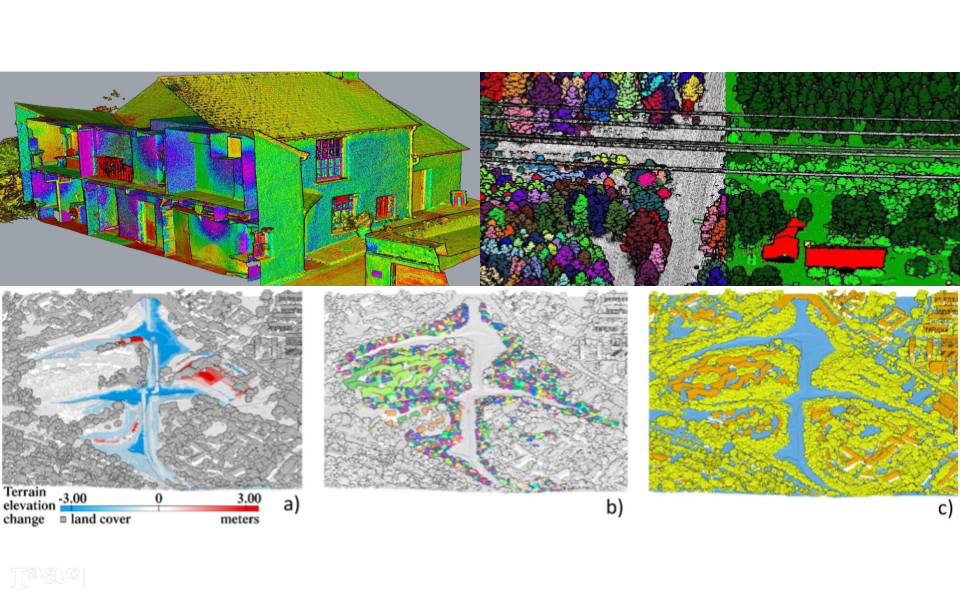//BRIEF DESCRIPTION
The transition from point cloud scanning to object/geometry recognition in architecture is challenging due to data complexity, manual processes, and limitations in existing software solutions. This workflow is slow and since part of it is still done manually and precision is lost. The aim of this research is to identify the challenges in the process and evaluate the potential of AI-based improvements in software solutions.
//EXPERT
Benedikt Kowalewski
PhD Researcher | NCCR Digital Fabrication | Professor Christophe Girot
Benedikt is a Doctoral Researcher at ETH Zürich. His research focuses on improving the human- machine communication of landscape designers using the HEAP. Especially on the design side, new tools and approaches need to be developed to visualize and control the new, flexible robotic landscape design process. Apart from that, together with Magdalena Kaufmann he conducts the DesignLab Elective Course, which focuses on the implementation of pointclouds into the field of architecture and landscape design.
//PODCAST BRIEF
#1 Major challenges in transitioning from Real Life Scan to a defined geometry in landscape and urban design

#2 Improvements of the softwares with new technologies, such as AI

#3 A multi-disciplinary issue

https://www.sciencedirect.com/science/article/pii/S0169204619316536
//QUESTIONS
E: Hello and welcome to our podcast!
We are Manuel and Eugenia and we are here with our special guest Ben.
Hi Ben! Thank you for being virtually with us today!
Benedikt is a Doctoral Researcher at ETH Zürich. His research focuses on improving the human-machine communication of landscape designers using the HEAP. Especially on the design side, new tools and approaches need to be developed to visualize and control the new, flexible robotic landscape design process. Together with Magdalena Kaufmann he conducts the DesignLab Elective Course, which focuses on the implementation of pointclouds into the field of architecture and landscape design. Our discussion today revolves around the concept of the challenging transition from point cloud scanning to geometric models in architecture. This workflow is slow and since part of it is still done manually and precision is lost. The aim of this research is to identify the challenges in the process and evaluate the potential of AI-based improvements in software solutions.
E: 1. So Ben when and how did you start experimenting with point cloud scanning to a defined geometry in the architecture practice?
B: (answer)
E: 2. When are point clouds used (disciplines, type & scale of projects) and how can a smart workflow be introduced?
B: (answer)
E: 3. What are some of the major challenges you have experienced in transitioning from Real Life Scan to a defined geometry in landscape and urban design? In terms of detecting and creating elements, what are the biggest limitations?
B: (answer)
M: 4. What is the cost to benefit ratio of the point cloud scanning integrated to BIM? Can you elaborate on the safety aspect?
B: (answer)
M: 5. How do you see the integration of advanced software solutions such as Building Scan to BIM, Point Sense, Edge Wise, and Leica Cloud Worx affecting the building design and construction process?
B: (answer)
M: 6. Do you think AI can help improve this process and how?
B: (answer)
M: 7. Would it be possible in the near future to create a live point cloud of a building under construction to or to compare/contrast/verify/analyze the construction process with the BIM model?
B: (answer)
M: 8. How do you envision the future of Real Life Scan to models, with the continued advancement of technology?
B: (answer)
M: “Thank you for joining us today! It was very interesting talking to an expert in the topic, great insight and enriching talk!”
// CONCLUSIONS
- Element detection and BIM integration have become a necessity in the industry, providing benefits across multiple disciplines in the AEC.
- It needs to be developed.
- With the help of artificial intelligence, the process of semantic segmentation will be greatly improved, as well as the modeling of the elements will be greatly improved.

